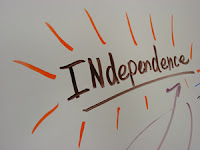 An effective communication barrier is one of the problems faced by many organizations.
An effective communication barrier is one of the problems faced by many organizations.
Barriers can threat an important discussion, debate or conversation, or even work being completed.
Background noise:
Background noise that interferes with a clear understanding of the message. It can also distract a person while giving a speech, or presentation.
There are many forms of different background noise which can be a distraction, a few of these include:
- Phones ringing.
- People yelling to each other from one end of the office to the other instead of moving closer so they can talk.
- People talking on the phone in a voice loud enough to almost make the phone unnecessary. The same people also have a tendency to walk around the office while shouting into their phone.
- People running back and forth, stomping on the floor with their hard-heeled shoes. Depending on how your office building is constructed you may also feel the floor vibrate from their steps.
Distractions:
There can be so many distractions when someone is giving a speech or presentation in an organization and some of these distractions are unpreventable.
But some distractions are avoidable, for example, turning mobile phones off as many phones may go of or vibrate which will then disturb everyone that is listening to the speech, arrive on time or come in quietly as this can also disturb people listening as people arrive in late as they will turn around to see who it is.
Distractions occur quite often in everyday life, and people need to learn how to ignore those distractions and continue what they are doing, for example undertaking a presentation.
Lack of Concentration:
If an employee is lacking in concentration this can badly affect their work load, or carrying out tasks.
There are many reasons for lacking in concentration, this could be problems at home, or maybe feeling ill, these can stop or slow down your work as you have them on your mind rather than your work.
Concentration can also be lost when there is other things happening around the employee’s work station, this could be loud noises or talking, this could enable the employee to loose their concentration and forget what they are doing, or they could go out and find out what is going on, this could loose the employees train of thought to what they were previously doing.
Although there are many mechanisms which are able to reduce these barriers to communication, a few of these mechanisms are:
1) Eye contact
2) Recognising personal space
3) the use of non-verbal communication: facial expressions and gestures. Non-verbal: speech, tone of voice and pitch.
4) The communication of touch.
5) Listening skills, such as head nodding
6) dressing correctly for the occasion.
7) Good interpersonal skills.


































